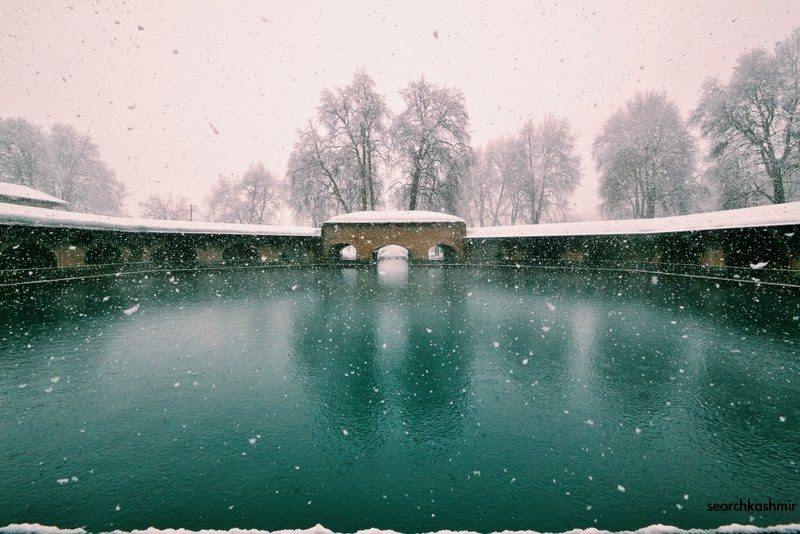 |
| A Window Gazer. Kralkhod. 2008. |
Guest post by Arun Jalali.
Dear friends, let me remind you of a very cheesy past-time activity that we all indulged in with great passion growing up at downtown Srinagar; Window Gazing.
Before I begin, I want to admit, to the hard fact that the second inference of “window gazing” dawned on me only after migration to Delhi. I realized that these parts staring at someones window amounted to an “uncultured act” and something that ought to be corrected immediately .
But back home in Srinagar our window gazing was entirely of the reverse nature; Whenever we needed a break, we would just sit and gaze out from inside the window and appreciate the passing life of the day. It was an art form. For older folks, it must have been akin to meditation.
Before I attempt to dwell further into the subject, allow me to recreate the scene, that made Gazing-out a passionate act filled with the experience that left us with a feeling of connection and appreciation, of love rooted in the neighborhood.
Need for Gazing out:
It is said that Finnish people, the people who gave us Nokia, were prompted to mobile communications simply for the reason that harsh winters would otherwise prevent physical interaction. We in Kashmir perhaps as a society must have been in similar frame of mind when as a solution we indulged in “Window Gazing” as the medium of communication.
The Act:
Memories of a typical “Window Gazing” for us would today read something like following:
- Observing the pedestrians.
- If your house be on a river bank, watching the river flow and the boats.
- Listening to Radio Commentary for better reception would always be better near the window.
- Watching the snow fall.
- Watching a neighborhood fight.
- If you be ill and parents not letting you to go out; a consolation would be a view through the window of friends playing in the angun, yard.
- Watching old men and women passing their days.
- Making important announcements and listening to important announcements.
- During lunch time – Vidya Bhavan class mates would “window gaze” across the river to see the activities of girls college; back benchers had the premium view.
- List is endless …..
-0-
To this list I would like to add a memory shared by my father. Sometimes, he used to sit on the window to watch Katij (Barn Swallow) chase and evade passing cars and people.
-0-
Update: Additional Input and a beautiful old photograph from D.N. Kaul Ji shared via email by Arun Jalali Ji. ‘Buethuk dari- dakas’ is a term that I too have heard from my elders but only now I understand its meaning.
There used to be various types of windows in a Kashmiri pandit’s house.
1. Front Facade Windows – These windows would open to the common or slightly bifurcated compounds of cluster of neighbour’s houses. The window ledges were designed to maintain the height of window size to suite a normal adult to rest his/her arms on window frame while sitting over there. While as, a child guard (Dum-dier) was also fixed. The window ledge were well furnished to make the sitting comfortable for the long sittings. The window gazing from front facade windows were not apprehended as peeping or probing, Because all neighbours around had already recognized it at the back of their mind. Knowingly or unknowingly these windows were used for many purposes:
a. Security purpose (a vigil) – as was required.
b. Keeping eye on visitors or tresspasser and any day to day activities, in any of the neighbours’ house – for good intentions or in some cases for inquisitiveness.
c. For spitting, coughing out or creating hullabaloo, to dilute the quietness of winter hours (which used to be very depressing at times).
d. Window gazing was very beneficial to older persons to keep their blood pressure under control.
2. Back Facade Windows – These windows at the back of the houses were generally opening to either a street (Kocha) or far neighbours’ house. Gazing from these windows of course would not be etiquette. Generally gentlemen would not gaze from these windows. It was done very rarely and only when actually need be. Yes if young boys or girls would be caught gazing, they would be scolded by elders ( buethuk dari- dakas).
3. Windows at the upper story’s Cantilever (Dubb Deir ) – Gazing from these windows was for panorama. One would gaze at far away house, street, like in Srinagar-Jehlem or Kutt Koal River. One would gaze at stars or moon -faraway snow Cladded Mountains, roofs of other houses.
4. Wogha (Roshan dan)- These used to be very small window on a height, not easily reachable
-0-




























